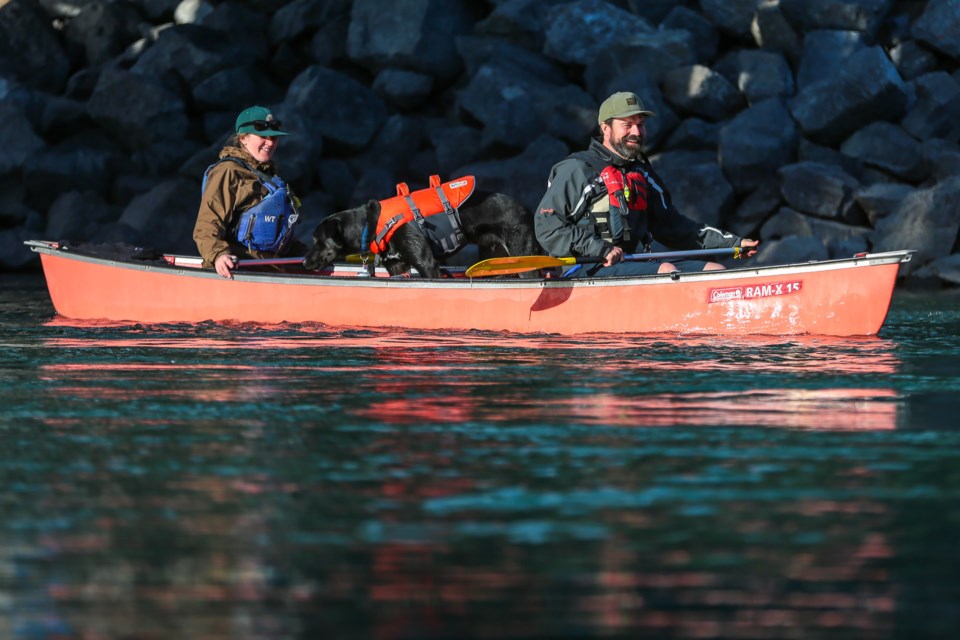BOW VALLEY– Banff and Canmore obliterated temperature records on six consecutive days during the unprecedented heat wave earlier this summer – and there’s a chance more records will be broken in August.
Banff had its hottest day in recorded history on June 29 as the mercury soared to 37.8 Celsius, smashing the previous record for that day of 33.9 C in 1937 and the all-time Banff high of 34.4 C on July 17, 1941.
The next day, a weather station at Bow Valley Provincial Park recorded the hottest day in history for the Canmore-area as the temperature hit 38.2 C and breaking the previous high for that day of 30 C in 2008.
Meteorologists with Environment and Climate Change Canada say both weather stations recorded historic temperatures for six days in a row between June 26 and July 1 during the heatwave across Alberta and British Columbia.
“It was very much a historic heat wave for the magnitude and duration of it,” said Kyle Fougere, a meteorologist with Environment and Climate Change Canada.
According to Environment and Climate Change Canada, Banff’s temperature hit 31.9 C on June 26, beating the old record of 31.1 C in 1925.
From there, the temperatures continued to climb – 33 C on June 27 (32.2 C in 1925); 36.6 on June 28 ( 31.9 in 2015); 37.8 C on June 29 (33.9 in 1937); 37.4 on June 30 (31.2 C in 2008: and 35.6 C on July 1 (31.6 C in 2013).
Fougere said there were four days during the heatwave in which Banff’s temperature was higher than the all-time high of 34.4 C.
“It truly was incredible,” he said, adding temperature data has been collected in the Banff area since 1887.
The closest weather station for Canmore is at Bow Valley Provincial Park.
Records were set when the mercury hit 32.6 C on June 26 (31.3 C in 2002); 32.2 C on June 27 (31.8 in 2015); 37.7 on June 28 (31.5 C in 2015); 38.1 C on June 29 (33.9 C in 1937); 38.2 C on June 30 (31 in 2008); 37.6 C on July 1( 30.4 in 2013).
In same cases, Fougere said records were beaten by more than seven degrees Celsius.
“The old records were absolutely demolished,” he said.
Fougere said the historic heatwave was described as roughly a one-in-a-100-year event based on its magnitude and duration.
“That doesn’t mean we get one in every 100 years; it just means that’s the likelihood for that to happen now,” he said.
“I don’t know if we’re going to see a heatwave of that magnitude and duration any time soon, but the expectation is as our climate changes, we are going to see more extreme heatwaves more often in summer time.”
The heatwave is a result of a ridge of high pressure that was in a so-called blocking pattern.
“When we have a ridge of high pressure we have sinking air, which prevents the formation of clouds so you get clear skies and really warm temperatures – we call it a blocking pattern and it just doesn’t move,” Fougere said.
“It was locked over western North America America and that’s why it was such a long duration event.”
The pattern hasn’t changed much since June, other than a brief reprieve of cooler temperatures, before the high pressure ridge built back up again.
“That’s what we see right now,” Fougere said, noting there may be scattered showers in the Banff and Canmore area heading into this weekend, but temperatures continue to be in the high 20s to low 30s.
“Temperatures are still well above normal for the area. The normal for this time of year is to have a high of 22 and a low six. The near term forecast for the week is continued heat and hot and dry.”
Fougere said the same goes for August and into September with continued hot, dry weather.
“There will be periods of rain, likely in the next few months, but on average, we’re expecting it to be drier and warmer than average,” he said.
With tinder dry forests, the lack of rain continues to be a concern.
According to Environment and Climate Change Canada, the Banff region saw 78 millimetres of rain in March, April and May compared to an average of 115 mm that typically falls during those three springs months.
In June, which is typically the wettest month of the year here, 24 mm on rain fell compared to an average of 62 mm.
Fougere said 43.7 mm of rain was recorded in the region throughout July, which typically sees an average 54.2mm, but he pointed out that 29 mm of the 43.7 mm fell on just one day – July 5.
“The good news is the second rainiest month is actually August, so at least there’s potentially more rain to come this summer,” he said.
While forecasting temperatures too far out is next to impossible, Fougere said there’s a chance more temperature records can be broken.
“We could set some records still; there’s still another full month of summer,” he said.
The small town of Lytton in British Columbia, which burned to the ground on July 1 when a wildfire swept through, set a new record for Canada’s highest temperature – hitting 49.6 C on June 29. In the days leading up to that, it smashed the country’s previous records, reaching 47.9 C on June 28 and 46.6 C on June 27.




